Leather jackets possess an undeniable allure – a blend of style, durability, and timeless appeal. A quintessential staple in fashion, these pieces provide warmth and add an edgy sophistication to any outfit. But have you ever stopped to wonder what hides beneath the smooth finish of your favorite leather jacket? This article aims to unravel the mystery behind the making of leather jackets, delving into the material origins and the fascinating process that transforms raw hide into a fashionable must-have.
Types of Leather for Jackets
When it comes to the material of leather jackets, there are many factors at play. The choice of leather for a jacket depends on the desired style and appearance. Let’s explore some of the most popular materials used in crafting leather jackets:
Full-Grain Leather
Full-grain leather is renowned for its exceptional quality. Crafted from the top layer of the hide, it boasts unparalleled texture and character. This luxurious material is frequently employed in fashion-forward jackets that exude durability and longevity. Its rugged appearance appeals to those with a penchant for an edgy aesthetic, making it a beloved choice among many.
Split Leather
This particular kind of leather is produced by splitting the hide, resulting in a more affordable alternative to full-grain leather. However, it does not possess the same level of durability and distinctive characteristics. Split leather is commonly utilized in the creation of everyday jackets, including bomber or biker styles, suitable for regular wear.
Nubuck Leather
This type of leather has a velvety texture that makes it very soft and luxurious. It is created by sanding the top layer of the hide until it has a suede-like finish. Nubuck leather jackets have a more formal look, making them perfect for special occasions or business wear.
Suede Leather
This particular kind of leather bears resemblance to nubuck, albeit with a slightly coarser texture. It is crafted by gently brushing the inner layer of the hide, resulting in a velvety finish. Suede leather jackets are commonly worn for casual occasions and outdoor pursuits. [1]
Bonded Leather
The most cost-effective leather option available is bonded leather, which is created by bonding together scraps of material to form a single piece. Although not as durable as other types of leather, bonded leather is commonly used for jackets with a contemporary style.
Regardless of the type of leather you choose, it is crucial to properly care for your jacket through regular cleaning and maintenance to ensure it retains its best appearance. By doing so, you can enjoy the timeless beauty of your leather jacket for years to come.

Keeping Your Leather Jacket Clean
To ensure your leather jacket retains its pristine appearance, regular cleaning and care are essential. Here are some valuable tips on how to properly maintain your leather jacket:
- Regularly remove dirt and dust from the surface using a soft brush or a damp cloth.
- Protect your leather jacket from direct sunlight and excessive heat to prevent fading.
- Keep the material supple and soft by using a leather conditioner on a regular basis.
- When not in use, store your leather jacket in a cool and dry place.
Following these simple steps will help ensure that your leather jacket stays looking great for years to come. With proper care, you can be sure that your jacket will stay looking as good as new. [2]
Benefits of Wearing a Leather Jacket
In addition to being a stylish fashion choice, leather jackets offer many other benefits. Here are some of the top reasons why you should consider investing in a leather jacket:
- Durability: Leather jackets can last for several years if they are properly cared for and maintained. They are also lightweight and water-resistant, making them ideal for outdoor activities.
- Versatility: Leather jackets can be worn with virtually any outfit, from casual jeans to dressy slacks. Depending on the style and color of the jacket, it can even be dressed up or down for different occasions.
- Comfort: Leather jackets are incredibly comfortable. They are made of breathable material that is lightweight and flexible, allowing you to move around easily.
Whether you’re looking for something to wear on a night out or just an everyday jacket, a leather jacket is always a great choice. With its timeless style and versatility, it is the perfect addition to any wardrobe.

Care and Maintenance Tips for Leather Jackets
Leather jackets are a timeless wardrobe staple, but to keep them looking and feeling their best, proper care and maintenance is essential. Here are some tips to help you get the most out of your leather jacket:
- Store it properly. Hang your jacket in a cool, dry place when you’re not wearing it. Keeping it on a hanger will help the material maintain its shape and reduce wrinkles. Avoid leaving your jacket in direct sunlight, as this can cause discoloration over time.
- Protect against dirt and stains. Consider using a waterproof spray to protect your jacket from dirt, oils, and other contaminants. If you get caught in a rainstorm, hang your jacket outdoors to let it air dry.
- Clean regularly. To keep your jacket looking its best, gently wipe it with a damp cloth and allow it to air dry. Never use harsh detergents or wash the material in a washing machine as this can damage the leather fibers. For tougher stains, you may need to seek professional cleaning services.
- Condition. Regularly condition your jacket with a leather conditioner or waterproofing wax to keep it soft and supple, and prevent cracking over time.
- Invest in repairs. After regular wear and tear, your leather jacket may need some repairs from time to time – for example, minor stitching or new zippers. To make sure the job is done right, it’s best to take your jacket to a professional. [3]
With these tips in mind, you can keep your leather jacket looking like new for years to come!
When To Wear A Leather Jacket
Leather jackets are incredibly versatile and can be worn year-round – from breezy spring days to wintery cold months. Here are some ideas on when to wear your leather jacket:
- In the spring, pair a light brown leather jacket with a colorful t-shirt and jeans. This combo is perfect for weekend outings or casual lunch dates.
- During summer nights, rock a black leather jacket over an airy maxi dress for a cool, edgy look.
- In the fall, pair a classic brown leather jacket with a cozy scarf and boots for a timeless autumnal ensemble.
- For winter months, layer your leather jacket over thick sweaters and jeans – it’s both stylish and practical!
No matter what season you’re in, there’s always an occasion to wear your leather jacket.
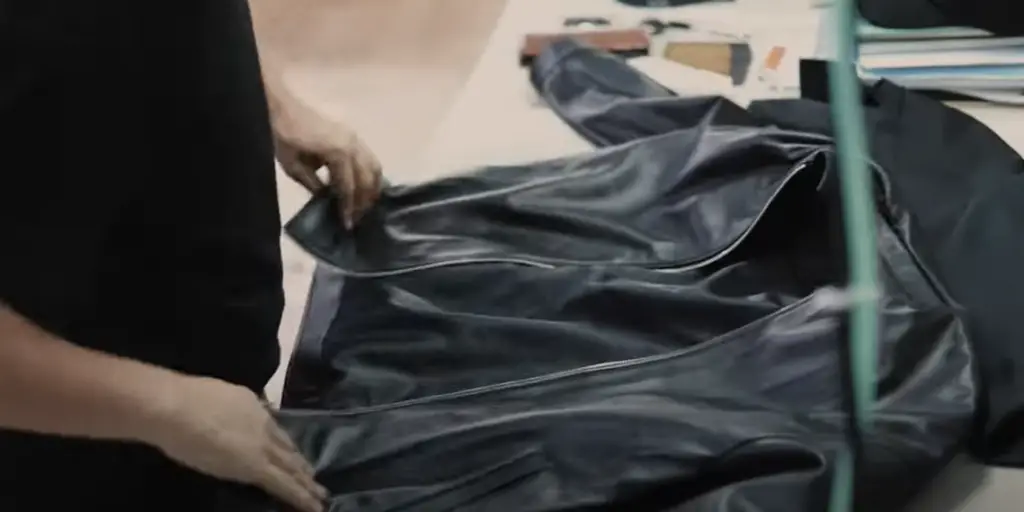
Shopping For The Perfect Leather Jacket
When shopping for a leather jacket, it’s important to consider the quality of the material. Look out for jackets made with full-grain leather – this type of hide has not been sanded or buffed to remove imperfections, resulting in strength and durability. It is also more resistant to wear and tear.
With these tips in mind, you’re sure to find the perfect leather jacket to add to your wardrobe! [4]
A Timeless Wardrobe Essential
Leather jackets are a timeless wardrobe staple that can be worn for any occasion. With proper care and maintenance, you can keep your leather jacket looking like new for years to come. From classic brown to edgy black, there’s sure to be a style that catches your eye – so start shopping today!
And don’t forget – no matter what season it is, there’s always an occasion to wear your leather jacket. So go ahead and show off your style – you can never go wrong with a leather jacket!
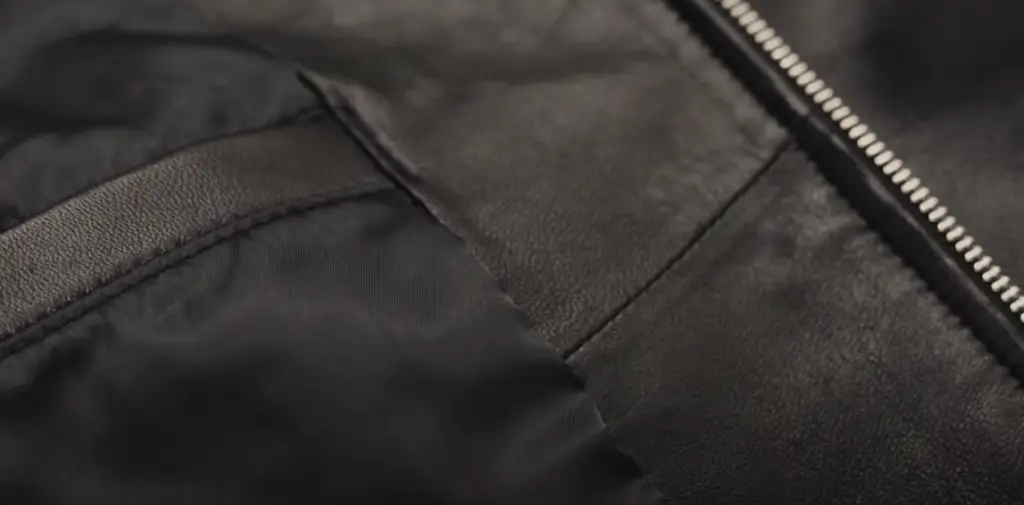
The Durability and Versatility of Leather Jacket Materials
Leather jackets are among the most popular garments, known for their durability and versatility. But what exactly are leather jackets made of? Leather is usually the primary component in a leather jacket, though there is some variety in the type used depending on the desired look and feel of the end product.
Cowhide is one of the most common types of leather used in the creation of leather jackets. Cowhide is known for its strong, thick fibers and robust texture that make it ideal for heavy-duty use as well as everyday wear. Sheepskin is another popular material for making leather jackets; this option offers softer fibers that create a supple feel to the jacket’s exterior.
The type of leather used for a jacket also affects the final appearance; different types of tanning and dyeing processes change the color and texture of the jacket. Many modern leather jackets are made with light-colored, oiled finishes, which give them a unique look that’s suited to contemporary trends. For a classic look, many designers opt for dark-tinted cowhide or sheepskin.
The lining of a leather jacket is important when it comes to comfort and insulation. Most are lined with synthetic fibers like polyester or rayon, as these materials are lightweight yet strong and keep the wearer warm in cold weather. Other popular linings include wool, satin, and cotton.
Finally, additional elements such as buttons and zippers can also vary, depending on the style desired. In some cases, metal hardware is used to maintain a sturdy structure; this helps to ensure that the jacket will remain in good condition for many years to come.
Leather jackets are perfect for any weather and occasion, offering an unparalleled level of both style and comfort. With so many materials and designs available, it’s easy to find the right look that expresses your individual style. [5]
Accessories and Add-ons for Leather Jackets
Leather jackets are a versatile outerwear piece that can be dressed up or down depending on the occasion. But part of the fun is being able to personalize and accessorize your leather jacket with accessories and add-ons.
Belts, buckles, snaps, studs and other hardware accents are some of the most common additions to leather jackets. These can help enhance the look of the jacket and give it an even greater level of individuality.
Fur collars, fur cuffs and fur lining are also popular add-ons that can provide both style and warmth in colder climates. Faux fur is a great alternative if you want to stay fashionable without sacrificing your personal values.
Cultural Significance/Symbolism
Leather jackets have been around for centuries and are deeply rooted in culture. The style is commonly associated with tough, rugged, rebellious characters who wear them to make a statement. In the fashion world, they’re seen as an essential wardrobe piece that exudes both edgy cool and sophisticated charm. Leather jackets can be dressed down for a casual look or dressed up for a more formal occasion. Whether you’re looking to make a statement or just want to stay warm, leather jackets have come to symbolize the ultimate in style and comfort. [6]
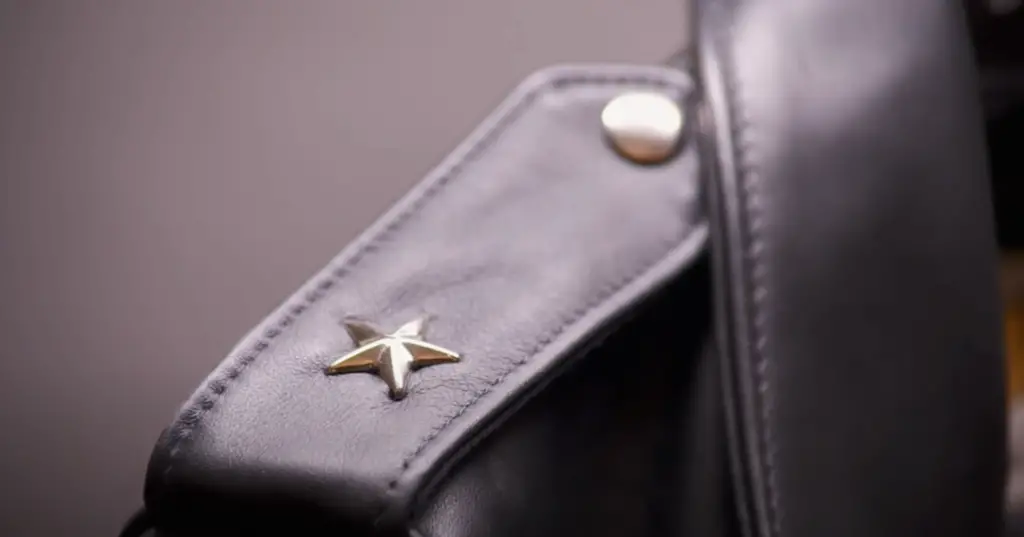
Material Types
Leather jackets are made from a variety of materials including cowhide, lambskin, goatskin, buffalo hide, and even synthetic materials. Each type of leather has its own unique characteristics that affect the look and feel of the jacket. Cowhide is the most commonly used material for leather jackets because it is strong, durable, and relatively affordable. Lambskin is softer than cowhide but more delicate. Goatskin is tougher and more water-resistant than cowhide or lambskin. Buffalo hide is incredibly durable and can be used in more extreme climates. Synthetic leather materials are usually made from a combination of plastic and fabric, making them very affordable but also less durable than genuine leather materials.
How Are Leather Jackets Constructed?
Leather jackets are constructed by cutting and stitching the pieces of leather together. The seams are then sewn with a special machine called a lockstitch sewing machine. This machine creates a strong, durable stitch that ensures the jacket is able to withstand wear and tear over time. After construction, leather jackets are often treated with dyes or waxes to give them their unique color and texture.
How Quality Can Make a Difference?
It’s important to note that not all leather jackets are created equal. The quality of a jacket is determined by the material used, the construction techniques, and how it has been treated after being made. Higher quality leather jackets will be made from high-grade materials, constructed with precision, and have a special finish to prevent cracking or fading over time. Low-quality leather jackets will be constructed from inferior materials, have sloppy stitching, and won’t last as long. When shopping for a leather jacket, it’s important to pay attention to the details and choose one that has been made with care and quality materials. This will ensure your leather jacket lasts through many seasons of style.
What Makes a Good Leather Jacket?
A leather jacket can be a timeless piece of clothing that lasts you for years, provided it is made with the right materials. It’s important to decide which type of leather you would like your jacket to be made of based on the properties of the material and its cost.
The most popular types of leather used for jackets are cowhide, sheepskin and lambskin. Cowhide is the most affordable and durable option, while also providing insulation to keep you warm in colder weather. Sheepskin is more expensive but has a softer texture and is typically lighter in weight than cowhide. Lambskin is the softest of all leathers, making it ideal for lightweight jackets that can easily be draped over your shoulders.
By following these tips, you can be confident in finding the perfect leather jacket to last you through all your adventures! [7]
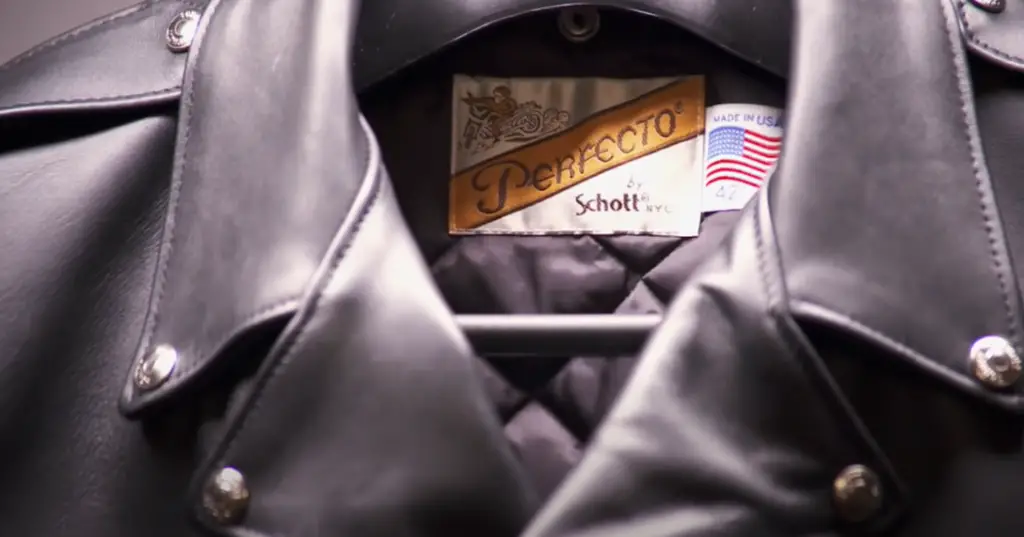
FAQs
What types of leather are used in making jackets?
The three most common types of leather used to make jackets are cowhide, sheepskin and lambskin. Cowhide is the most affordable and durable option, while sheepskin offers a softer texture and lighter weight than cowhide. Lambskin is the softest in terms of texture, making it ideal for lightweight jackets that can easily be draped over your shoulders.
How is the leather processed for jacket manufacturing?
Leather is processed through a variety of methods, depending on the type of leather used and what it will be used for. Common processes include tanning, dyeing, and waxing or oiling to protect the leather from water damage and cracking.
What should I look for in a good leather jacket?
When selecting your leather jacket, look for one that has been treated with waxes and oils to protect it from water damage and cracking. Make sure the jacket also has multiple layers of stitching in order to ensure its durability. Additionally, check the lining – make sure it’s made from breathable fabric that won’t irritate your skin.
What are the benefits of wearing a leather jacket?
Leather jackets offer many great benefits. They are highly durable, providing insulation to keep you warm in colder weather and resistant to water damage, cracking, and abrasion. Leather is also low maintenance compared to other materials – it doesn’t require frequent washing or special care. Finally, they are stylish and timeless, making them a great investment for your wardrobe.
What makes leather jackets so durable?
The key to leather jackets’ durability lies in the processing and treatment of the leather material. The waxes and oils used to protect it from water damage and cracking are essential, as is the multiple layers of stitching that ensure a long-lasting product. With proper care, your leather jacket can last for many years and provide you with a timeless piece of clothing.
Are there different qualities of leather used in jackets?
Yes, there are different qualities of leather used in jackets. The most popular types are cowhide, sheepskin and lambskin. Each type has its own unique properties in terms of texture, durability, insulation and cost. It’s important to decide which one is right for you based on your needs and budget.
Can leather jackets be made of faux leather?
Yes, leather jackets can also be made of faux leather. Faux leather is a synthetic material that looks and feels like real leather at a fraction of the cost. It is usually more lightweight than genuine leather and does not require special care or maintenance – making it a great choice for those looking for low-maintenance outerwear.
How can I identify genuine leather in a jacket?
Genuine leather is relatively easy to identify. It usually has a unique smell, as well as visible imperfections or scars from its animal hide origin. Genuine leather also has a distinct texture – it will feel slightly oily and pliable when touched, whereas faux leather has a cold, stiff feeling to it. Additionally, genuine leather will usually be more expensive than other materials.
Are there environmentally-friendly options for leather jackets?
Yes, there are now many options for leather jackets that are eco-friendly and sustainable. For example, some companies use vegetable tanning to create leather from animal hides without using harsh chemicals. Additionally, some brands use recycled materials such as plastic bottles or discarded leather scraps to make their jackets. When shopping for a jacket, look for one made from organic or recycled materials for a more sustainable option.
What is the significance of the type of leather used in a jacket?
The type of leather used in a jacket plays an important role in its overall quality and performance. Each type of leather has different properties such as durability, insulation, warmth, and cost. Therefore, it’s important to consider which type is best for your needs – for example, cowhide might be the most affordable option but sheepskin will provide more insulation.
Useful Video: Process of Making Leather Jacket from 5 Sheepskins. Korean Leather Artisan
Conclusion
Leather jackets are a timeless piece of clothing that can last you through all your adventures. With the right materials and proper care, they can provide both comfort and style for years to come. When selecting your leather jacket, make sure to look for one that has been treated with waxes and oils, features multiple layers of stitching, and contains breathable lining material.
References:
- https://mahileather.com/blogs/news/all-you-need-to-know-about-leather-jackets
- http://www.madehow.com/Volume-2/Leather-Jacket.html
- https://www.wikihow.com/Choose-a-Leather-Jacket
- https://www.fjackets.com/blog/pu-vs-genuine-leather-jackets/
- https://goodonyou.eco/sustainable-vegan-leather-jackets/
- https://www.marc-o-polo.com/en-ie/p/leather-jacket-made-of-soft-lamb-leather-327700673008_990
- https://favoredleather.com/why-are-leather-jackets-so-heavy/

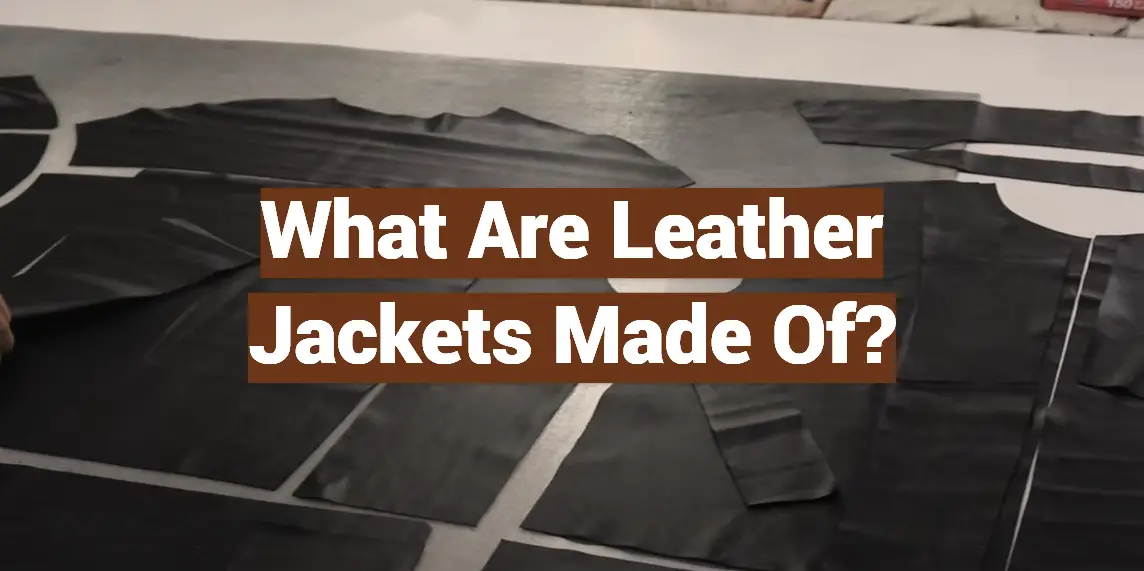
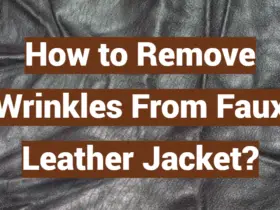




Leave a Reply